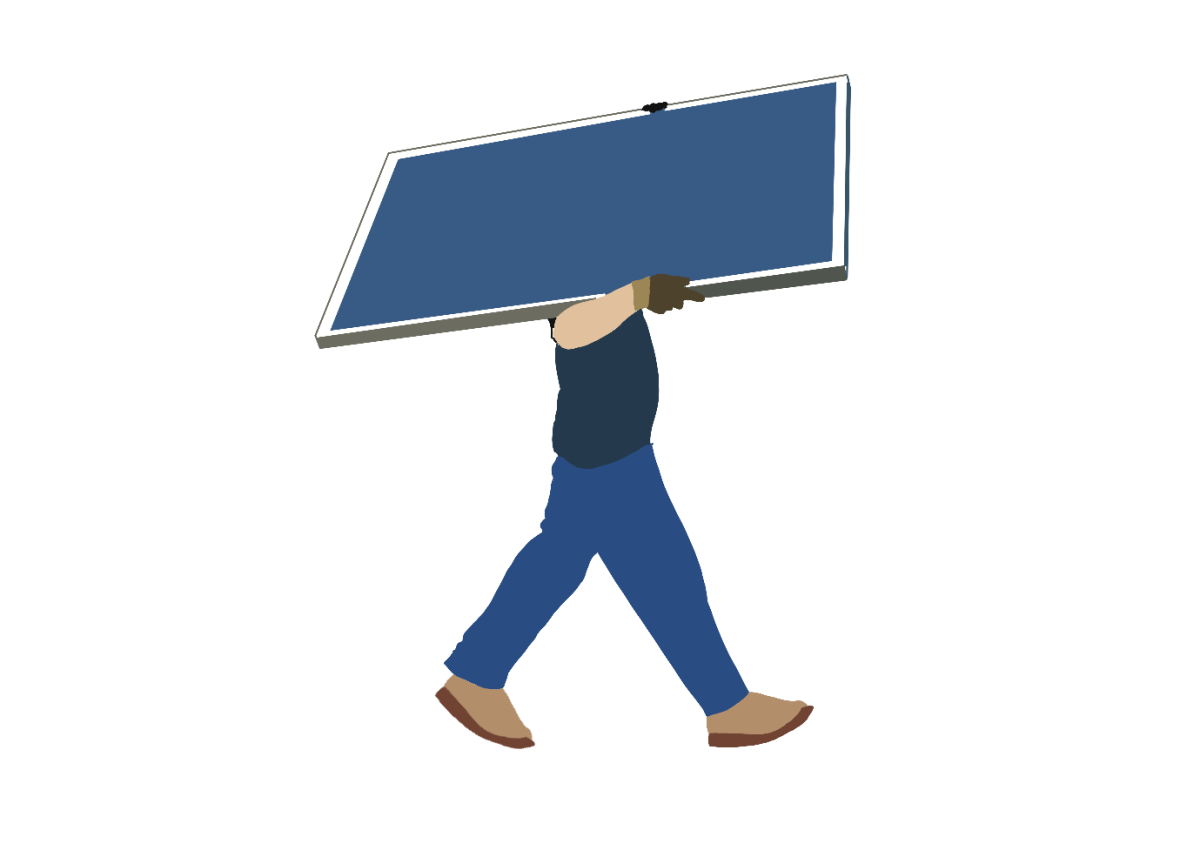$13M of renovations in the works
February 1, 2015
It is said that time heals wounds but it does something very different to brick, mortar and steel.
Structural repairs, performed by Plant and Service Operations, required attention before more noticeable projects around campus.
Phil Gatton, the operations director, said students and teachers eight years ago had to deal with buckets and trash cans strategically placed throughout classrooms and halls to catch drips from leaky roofs.
“Early on, money was primarily dedicated toward infrastructure, so we did roofs and mechanical systems,” Gatton said. “Now we’re spending a lot more money on things that people see.”
More noticeable improvements include the installation of new clocks in hallways and classrooms, and renovations of auditoriums and restrooms.
Gatton said these improvements, particularly the restrooms and clocks, are a result of student complaints.
“We had started taking clocks out of hallways and classrooms because everybody has a smartphone,” Gatton said. “We’ve discovered that a lot of the students aren’t allowed to use their phones in classes, so there was no way of telling time.”
Restroom repairs and replacements included new exhaust fans and automatic toilets and urinals, all part of making restrooms more sanitary.
Recent renovations also include $6,000 to $7,000 invested in tunnels under campus. The tunnels contain steam pipes, which power most of the buildings.
Since Carbondale’s buildings and campus received an internal makeover in 2014, larger and more costly projects will receive attention.
Gatton said work slows down with the presence of students, but ongoing projects, some with scheduled completion dates this summer, are still making headway.
These projects include:
- Transitioning the school of social work out of the Quigley Hall basement and the school of architecture into the vacated space, once renovated ($1.2 million)
- Continued classroom and lab restoration and repair
- McLafferty annex conversion to research facility (nearly $4 million)
- Continued sidewalk replacement
- New parking lot and road repairs
- Trueblood remodeling to house Department of Public Safety ($1.8 million)
- First phase of Woody Hall renovations ($6 million total for all three phases)
- Carterville campus demolition
Gatton said the Facilities Maintenance Fee, $722 a year per student, helps keep these projects afloat when budget cuts hinder progress.
Along with the construction of new facilities, students’ money goes toward making campus safer.
Gatton said new lights have been installed inside and out, including the north pedestrian bridge. He said while the LED lights are slightly more economical, the key reason for their installation is safety.
“It’s much more like actual daylight,” Gatton said. “You feel much more comfortable walking [at night].”
This is not the only effort made to keep students safe.
Jon Shaffer, director of University Housing, said during busy hours, some students are inconvenienced by the lack of functionality of elevator No. 7 in Mae Smith residence hall, which has been out of service since last semester.
Shaffer said the elevator has been out of commission so long because a component of questionable integrity was found when replacing another part. He said he was unwilling to risk use of the elevator because its ability to function safely was cause for concern.
Recent and ongoing changes, particularly sidewalk replacements, also keep the campus compatible with guidelines set by the American Disability Act.
“The university has always been a campus that is known for accessibility,” Gatton said. “We don’t just look at meeting the codes. We look at pushing the envelope and trying to provide as much accessibility to our spaces as we can.”
Advertisement
Advertisement








